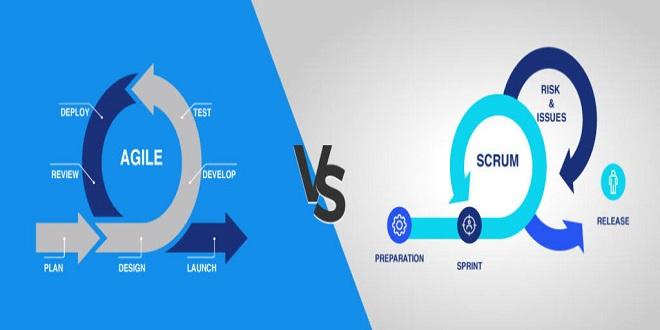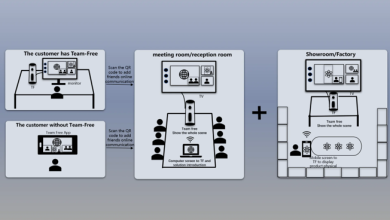Why Agile and Scrum?

It can be overwhelming to learn about project management if you’re new. Project managers play many different roles and have many responsibilities in their day-to-day jobs.
The project managers with CSM training are responsible for developing a plan and any ancillary plans for their projects. They manage the risks that are associated with their projects. They ensure that the project stays within its constraints. This list could go on.
Before you dive into the details, it is important to select the best project management method to guide you and lead your project to completion.
There are many methodologies available, each best suited for different types of projects. Scrum and Agile are two of the most popular approaches to project management, which can often be confused. It’s easy to see why the two can be confused due to their similarities, but they are two separate concepts.
Let’s take a look at Scrum and Agile in project management. We will also discuss how they differ from each other and how you can choose the best approach to your project.
You will learn everything you need, from the most in-demand skills to the growing career opportunities within the industry.
What is Agile Project Management?
Agile project management refers to a project framework or philosophy that uses an iterative approach to completing a project.
As per the Project Management Institute or PMI, the agile approach aims to generate early and measurable ROI through the defined, iterative delivery product features.
Agile methods are iterative and require constant communication with clients to align expectations and allow project managers to adjust to changing circumstances.
Many project management methods can be used to implement agile principles. Kanban, Extreme Programming and Scrum are some of the most popular. CSM training is an immense career option to complement Scrum knowledge.
What is Scrum Project Management (SQM)?
Project managers use Scrum as one of the most common Agile methods.
Griffin explains that Scrum is a methodology to manage a project, while Agile is a philosophy. It provides a method for identifying the work, who will do it, how it will get done, and when it will end.
Scrum project management involves a project team that includes a Scrum master, product owner, and other cross-functional members. The product owner is responsible for enhancing the product’s value, while the Scrum Master ensures that the project team follows the Scrum methodology.
Scrum is characterized by “sprints” or short phases when project work occurs. The sprint planning process allows the team to identify a portion of the scope completed in the next sprint. This usually takes between two and four weeks.
This work should be available for delivery to the client at the end of each sprint. The sprint ends with a sprint retrospective and review. This cycle continues throughout the project’s life cycle until all of the scopes are delivered.
This is similar to traditional project management in many ways. The key difference is the creation of “shippable” parts of the project rather than delivering all at once. This allows clients to recognize the value of the project during the entire process, rather than waiting for the project to close to see the results. CSM training is an immense career option to balance Scrum knowledge.
What’s the difference between Agile and Scrum?
It is easy to see how Scrum and Agile can be confused. They both rely upon an iterative process and frequent client interaction. However, Scrum and Agile are two different approaches to project management. Agile uses a set of core values and principles, while Scrum uses a specific agile methodology to help facilitate projects.
Other notable differences exist between Agile and Scrum.
Differences:
Agile is a philosophy. Scrum is an agile method.
Scrum can be further broken down into smaller sprints and deliverables. Agile, however, is a project that is completed at the end.
Agile is a cross-functional team that includes members of different teams. For example, a Scrum project team has specific roles, such as the Scrum Master or Product Owner.
It’s important to remember that Scrum is not an agile approach. Agile can refer to many other methodologies for project management.
Agile vs other Methodologies
Scrum and Agile often receive the most attention. However, you should also be aware of other methodologies. Here’s a comparison of Agile and Kanban, popular project management strategies.
Agile vs Waterfall
Another popular approach to project management is Waterfall. Agile allows for iterative, adaptive project management. Waterfall, however, is more linear and does not allow for retaking steps or phases.
For small projects with clearly defined goals, Waterfall is a good choice. Agile works best for larger projects that need more flexibility. The level of stakeholder involvement is another key difference between the two approaches. Waterfall doesn’t usually involve clients, while Agile requires client feedback. Remember CSM training is a massive career option to balance Scrum awareness.
Agile vs Kanban
Kanban project management, a type of agile methodology, aims to improve project management through workflow visualization with a tool called Kanban boards. Kanban boards are composed of columns that represent a stage in project management. Sticky notes or cards representing tasks are placed in the appropriate stages. The cards will move from one column to the next as the project progresses until complete.
Kanban is different from other agile methods like Scrum in that there are limitations on how many tasks can be currently being worked on at once. As a result, the project management teams will usually assign a certain number of tasks to each column so that new tasks can’t be started until the others are completed.
Agile vs Scrum: How to choose the right project methodology
You can start to apply these methods to your projects once you have a good understanding of Scrum and Agile. It shouldn’t come down to whether you should use Scrum or Agile, as there are many differences.
If you decide that Agile is the right approach for your project, then the question is: Which Agile method should you use? Of course, Scrum could be the answer, but you could also use one of many other Agile methodologies.
You will need to consider the requirements and constraints of your project before you decide whether Agile is right for you. Agile was initially created for software development projects. Therefore, it is especially effective in this area. This is why Agile will not work well for projects with very specific scopes and requirements. However, the agile philosophy’s guiding principles can be used for many projects.
Scrum and CSM works best for projects with unclear requirements that require frequent testing, or are susceptible to change. CSM training is a great career option.
Conclusion
It is important to realize that the key to a successful and profitable project is choosing the right method, CSM training and executing it in a skilled manner. This requires a deep understanding of the methodology and other essential project management skills. In addition, project managers must communicate well, manage a team, use critical thinking and problem-solving skills, and adapt to organizational dynamics and complexities to be successful.




